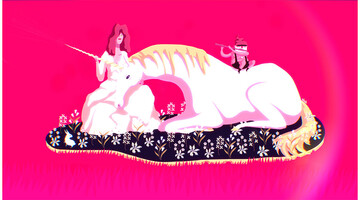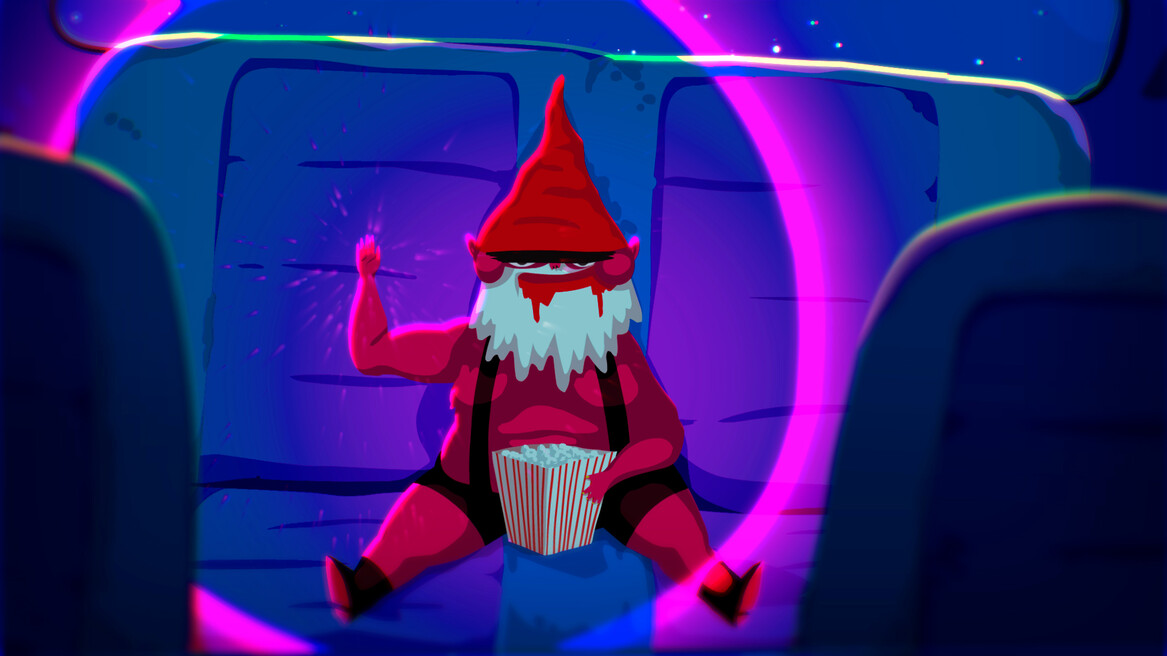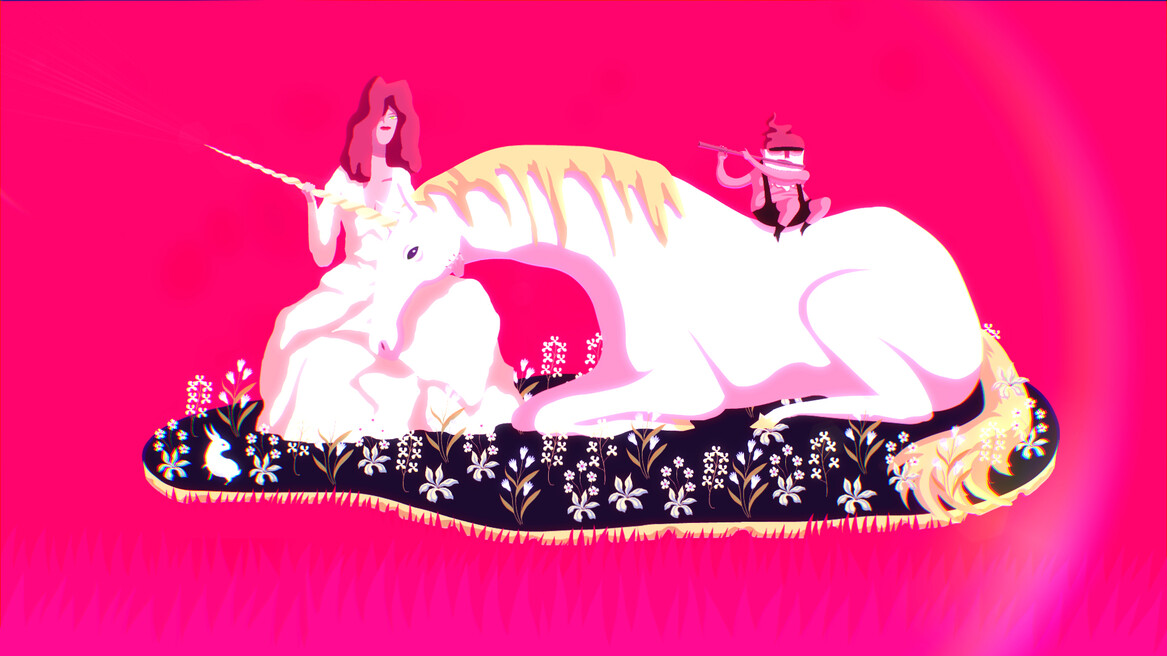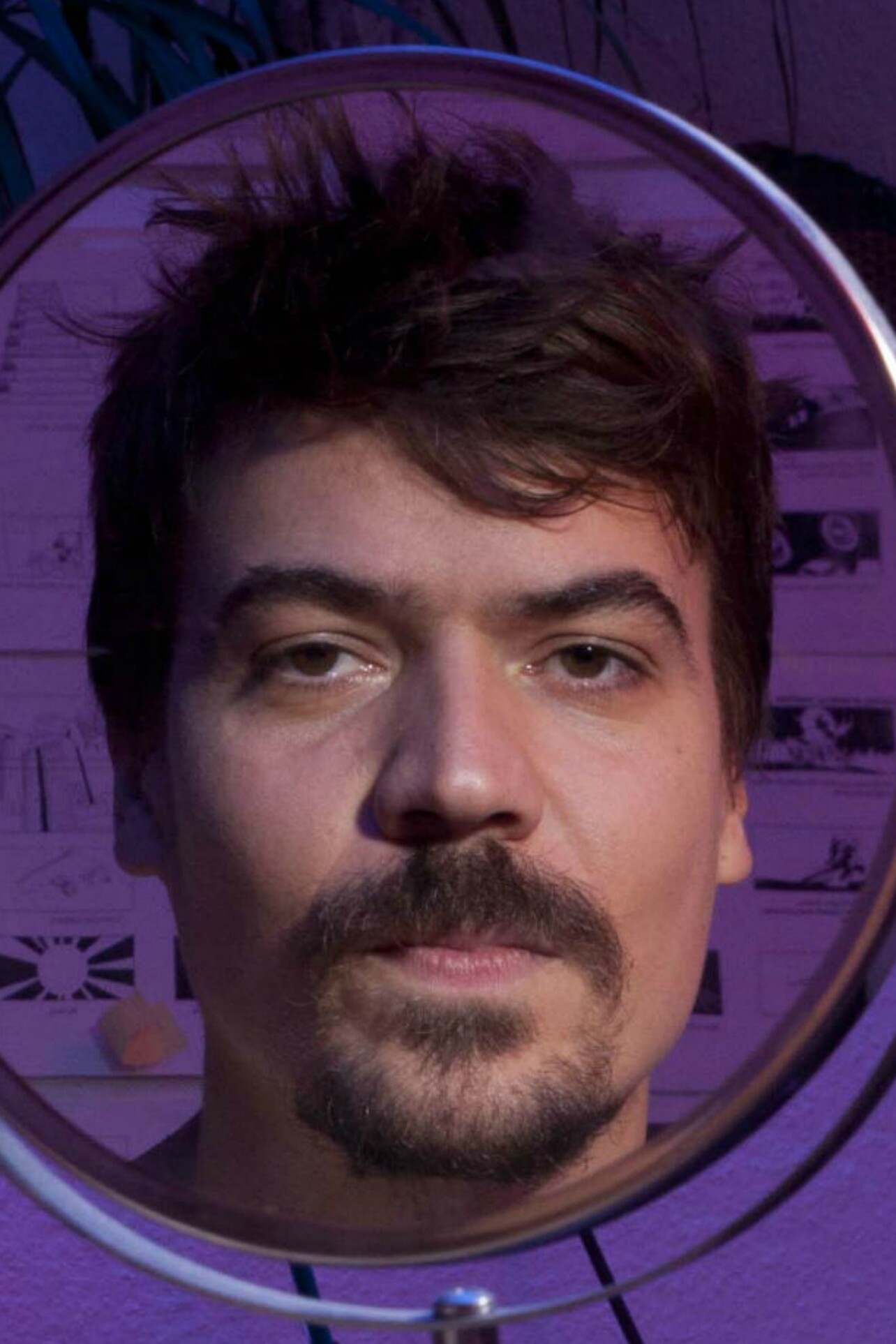
Balázs Turai on dramatic narratives, aesthetics and moral-artistic labyrinths
An interview with MQ Artist-in-Residence Noémie MarsilyAn interview with animation artist, author and director Balázs Turai, who is currently MQ Artist-in-Residence at MuseumsQuartier.
Balázs, your films combine bright animation, fabulous design with dark and serious matters. How did you come to create this unique combination of styles and themes? What’s visually appealing to you and how do you incorporate this into your films?
Thank you! That's simply what I enjoy in films: dramatic narratives and interesting esthetics. There is a European tradition of "serious" films having to be brown or grey or black and white, but I prefer all the other colors on the palette. The combination I enjoy comes, I guess, from scifi and B movies in general that don't shy away from wanting to look spectacular and entertaining and yet they don't have to be completely dumb. I'd like to be led into, not just an intellectual, but also a visual universe (and after all a visual universe is intellectual) - where I can enjoy the experience of the world, not just the pure psychological narrative. And of course there is an army of "big" directors who aim for this combo: Kubrick, Spielberg, Ridley Scott, Tarantino, Gaspar Noé, etc.
In AMOK – the film which got awarded in Vienna at the international short film festival VIENNA SHORTSlast year and earned you the one-month residency at the MQ this year – you could either interpret the protagonist as a victim or a culprit. Can you tell us how you chose to work with this moral ambiguity?
Exactly, he is a victim-culprit who gets both punished and forgiven. I guess this is just what seems right to me (my upbringing contained traces of Christianity). But the process of finding the final narrative was long and torturous, I rewrote the story for about a year, did therapy, walked around a lot mumbling to myself - the symptoms of being lost in a moral/artistic maze I guess. But in my estimation the process had a happy end and I feel relieved.
Not only did AMOK win in Vienna, but it also received praise and awards worldwide. Did the success of this film change anything for you, particularly in terms of your work process or any new opportunities that arose?
Yes. After a decade of trying, it proved to me that I am capable of producing something that's enjoyable to viewers. So I could finally stop worrying about this hurdle and just get on with film making. Funding-wise the film also got me into a good place. So my next short will be much easier to produce both financially and psychologically. And I'll see if I can get a winning streak running.
During your residency at MuseumsQuartier you will work on a new project: How does this process of working on a new film generally look like for you? And can you tell us already what it's going to be about?
I am writing the pilot for a series called "Little House on the Prairie on the Spaceship". In essence it's about hibernated passangers on an interstellar spaceship experiencing different, experimental virtual worlds. I see an idea kind of like a zipped file archive, first the thumbnail grabs you, then (maybe years later) you slowly unpack it. And if a complex enough concept emerges, it can be formulated and assembled into a pitch. And the idea itself can come from anywhere, although the ideas that grab me do seem to come from more extreme life situations - emotional turmoil or extasy, travels, adventures, etc.
For the music, you will work with Benjamin Efrati again (as you did for AMOK). How does this collaboration work and what role does music play in your films generally?
I've been working with Ben for 20 years, since we met at high school. We tried all kinds of collaborations: animation first and music after, or music first, illustrated with animation, or even the two simultaneously (for a web series that had to be produced very quickly).
For me music and animation are very close mediums, animation has a lot of musicality. It's nice to play with different registers of how they can meet: music can act as traditional film music, giving emotional cues and setting the narrative mood, but with animation it's very easy to make the two mediums join in complete symbiosis, musical and visual details dancing with each other, like in a Winamp music visualisation or those Tom and Jerry episodes completely set to a music score and reacting to the music's every vibration.
You are from Hungary and describe yourself as politically active. How do you combine your activism with your filmmaking? And considering this year's VIENNA SHORTS festival motto: what are you longing for in societal/political, but also personal terms?
I produced two seasons of a political web series titled Oligarchia (it's all in Hungarian, but you can get a feel of it here). For my short films I also like to go into socio-political themes, but not into day-to-day politics - I feel that takes something away from a literary narrative. But I do have an inner need for activism to feel whole and human, just like I need food, exercise, etc.
Being in Austria now, I see what Hungary could be like with a more humane and less corrupt management. The two countries are very close in history and potential, yet the cultural difference is extreme, with Hungary being consciously converted into a moral and intelectual pigsty by its leaders. What I wish for, as do many other Hungarians, is not only a change of government, but also the (re-)emergence of a rational and humane civil society. As for me and others in my trade, that would mean for example funding, not only for the government's lackeys, but also for critical voices, whose aim is not only to please the leadership, but also to improve it.
____________________________________________________________________________________________________________
The interview was held by Anna Roth, VIENNA SHORTS.
Photos: © Balázs Turai



